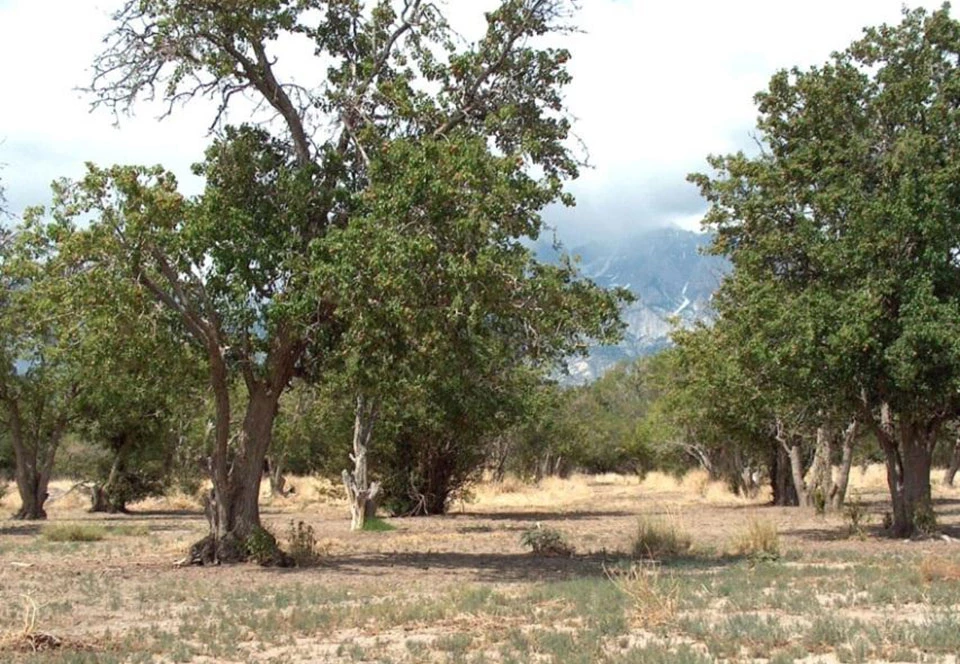Last updated: October 12, 2022
Article
Stabilization
What is stabilization?
Stabilization is intended to be a short-term, interim endeavor until long-term treatment can be planned and implemented. While treatment includes the full complement of actions needed to reach and perpetuate the ultimate goals for preservation in perpetunity, stabilization is limited to actions performed to prevent further deterioration in the condition of cultural resources.
Stabilization is performed when orchards or fruit trees are known to be, or are suspected of being, potential cultural resources, and their condition has deteriorated from good or stable to fair or poor. Stabilization may be performed before historical research, analysis, and evaluation have been completed in order to prevent the loss of potential resources.
Orchard at Manzanar National Historic Site


Left image
Historic orchard before stabilization, 2005.
Credit: NPS
Right image
Historic orchard after stabilization, 2010.
Credit: NPS
Health Stressors
The idea of removing health stressors is key to stabilizing the condition of biotic cultural resources like fruit trees and orchards. Stressors are factors that cause unfavorable living conditions over sustained periods and undermine a fruit tree's natural ability to live, grow, reproduce, or heal from predation, infection, or mechanical damage.
In the absence of underlying stressors, fruit trees have physiological strategies to adapt to the challenges of growth, reproduction and repair. In the presence of stressors, fruit trees have diminished resilience and their deterioration in condition is much more difficult to reverse.
Encroaching Competitive Vegetation
Encroaching competitive vegetation is any vegetation growing within the root or canopy zone of the fruit tree that is consuming water, nutrients, light or the physical space needed by the fruit tree, or sheltering pest organisms.
Encroaching competitive vegetation may include brushy undergrowth, overhanging overgrowth, or root suckers and water sprouts from the old fruit tree itself. Removing the health stressor of encroaching competitive vegetation is generally one of the first needs in most unmaintained old orchards, and reducing or eliminating competitive vegetation is an important first step in arresting deterioration and rendering the trees responsive to further stabilization actions.

NPS
Structural Instability of Fruit Trees
Structural instability is due to major defects in the main scaffold limbs, trunk, or roots of the fruit tree, leading to threat of leaning, partial uprooting or complete collapse. Defects such as loss of bark, cavities in limbs, hollow trunks, detachment from the roots, or root damage can all result in structural instability.
The presence of a hollow trunk is not a life-threatening condition, as the tree's conductive tissues for water and nutrients are located just beneath the bark. Structurally unstable fruit trees are extremely vulnerable to snow and ice storms, windstorms, or wildlife toppling, however, and are commonly killed by collapse. Structurally unstable trees are stabilized by propping or cabling individual limbs or bracing the whole tree to prevent leaning. Cabled, propped, or braced trees can achieve a healthy condition, and this is a critical first step in protecting structurally unstable trees.
Reservoirs of Disease Infection on the Site
Reservoirs of disease infection are the sinks of life-threatening pathogens within the orchard or fruit tree site that have accumulated in the absence of maintenance. Life-threatening pathogens are those that affect the tree's vital physiological processes, and are not limited to just attacking fruit.
Sinks of infection include deadwood attached or hanging in fruit tree canopies, downed dead trees and accumulated debris, or severely infected living trees within or adjacent to the orchard or fruit trees. Removal of these reservoirs of infection is critical to alleviate the threat of mortality, and to promote the natural longevity of the tree.
